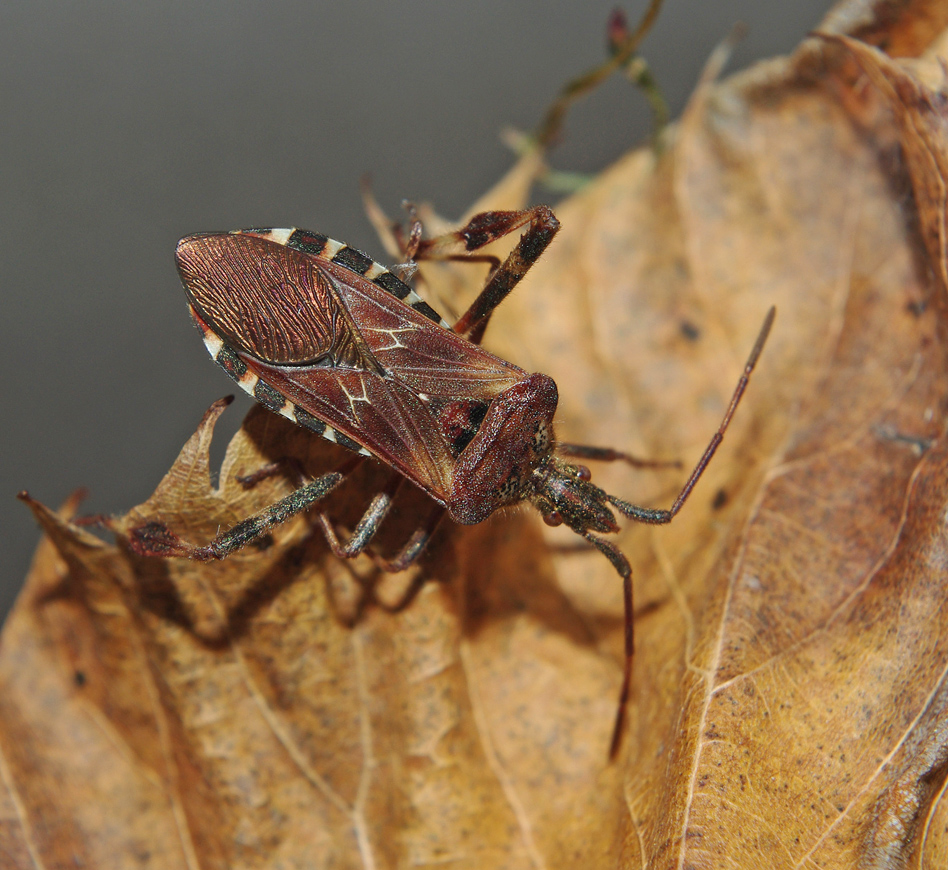
Western Conifer Seed Bug
Howdy, BugFans,
February 28 to March 4 is National Invasive Species Awareness Week.
The word “invasive” is often used interchangeably with the words “alien,” “exotic,” “non-native,” and “introduced,” but they are not synonymous. Alien, exotic, non-native, and introduced all simply mean that an organism isn’t from around here, but the vast majority of non-native species have no plans for world domination. Invasive organisms do. These are plants and animals that got here – somehow – leaving their home-town systems of checks and balances behind, and their booming populations damage their new ecosystems and evict the natives. Invasives don’t need to come from the other side of the world – aggressive rusty crayfish that originated in the Southern US now out-eat and out-compete native crayfish in Wisconsin https://uwm.edu/field-station/crayfish-revisited/ and damage habitat while they’re doing it.
Way back in 2011, the BugLady said a few words about Western Conifer Seed Bugs in a survey of the leaf-footed bugs (https://uwm.edu/field-station/leaf-footed-bugs/). The WCSB doesn’t rise to the definition of invasive, but it’s unwelcome in much of its range. It doesn’t kill the trees it feeds on or otherwise alter the landscape, but if you’re after 100% seed production, this is not your bug.
Here’s the rest of the story.
Western Conifer Seed Bugs (Leptoglossus occidentalis) (aka Pine seed bugs) are in the True bug order Hemiptera (“half-wing,” a reference to the two different textures of the front wings https://bugguide.net/node/view/38458/bgimage) and in the Leaf-footed bug family Coreidae, a large family of sometimes-dramatic-looking, sap-sucking insects https://bugguide.net/node/view/430144/bgpage with pretty cute little nymphs https://bugguide.net/node/view/1644287/bgpage. Coreids produce a buzzing sound in flight and an odor when provoked.
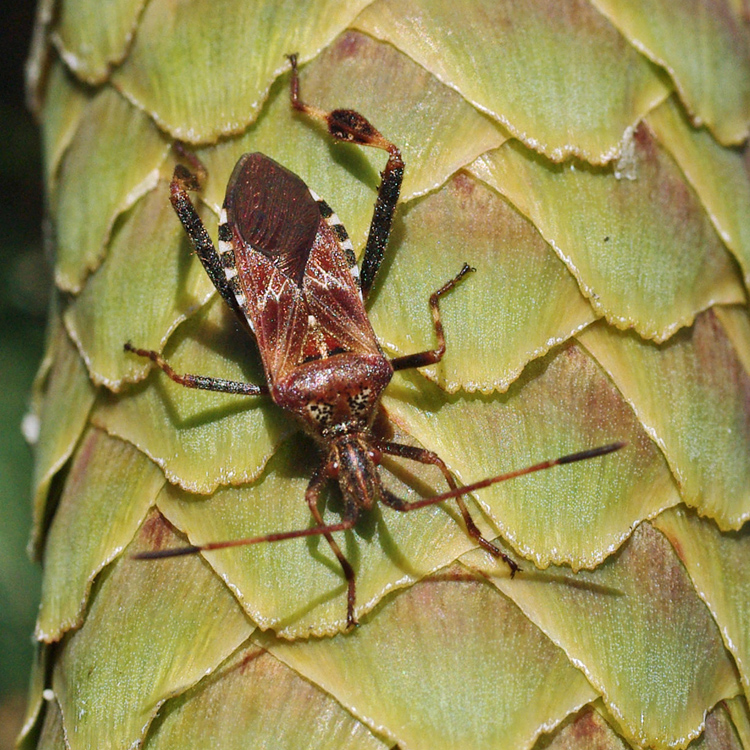
WCSBs are native to this continent, but their original range was mostly on the far side of the Rockies. They started moving east about 70 years ago (with the help of interstate commerce), reaching Michigan in 1987 and Pennsylvania in 1992, and they are now common throughout much of North America except the far Southeast. They’ve also managed to cross The Pond, were recorded in Italy in 1999 (where they’ve taken a liking to the culinary pine nut industry, with disastrous results), and are now spread throughout Europe and Asia. Look for them in conifer trees and (like Asian multi-colored ladybugs, Box elder bugs, and now Brown marmorated stink bugs) lined up to come inside in fall. They’re presently working on expansion south of the border.
That kind of range expansion is only possible for a generalist feeder that can be sure of finding something to eat wherever it lands. WCSBs feed on the sap from the developing seeds and flowers of about 40 species of conifers including fir, hemlock, spruce and pine trees (the BugLady included a picture of the female flower of a Norway spruce because they’re just so spectacular). They also sip sap from conifer twigs and needles, and they may move to non-coniferous trees if times are tough. They puncture the plant with piercing-sucking mouthparts that they tuck in under their body when not in use https://bugguide.net/node/view/740148/bgimage, and when they pierce a twig/seed/flower, they inject digestive juices that soften the plant material so they can suck it out. Many of their favored trees protect themselves from grazing by producing terpenes, which deter the WCSB not a bit.
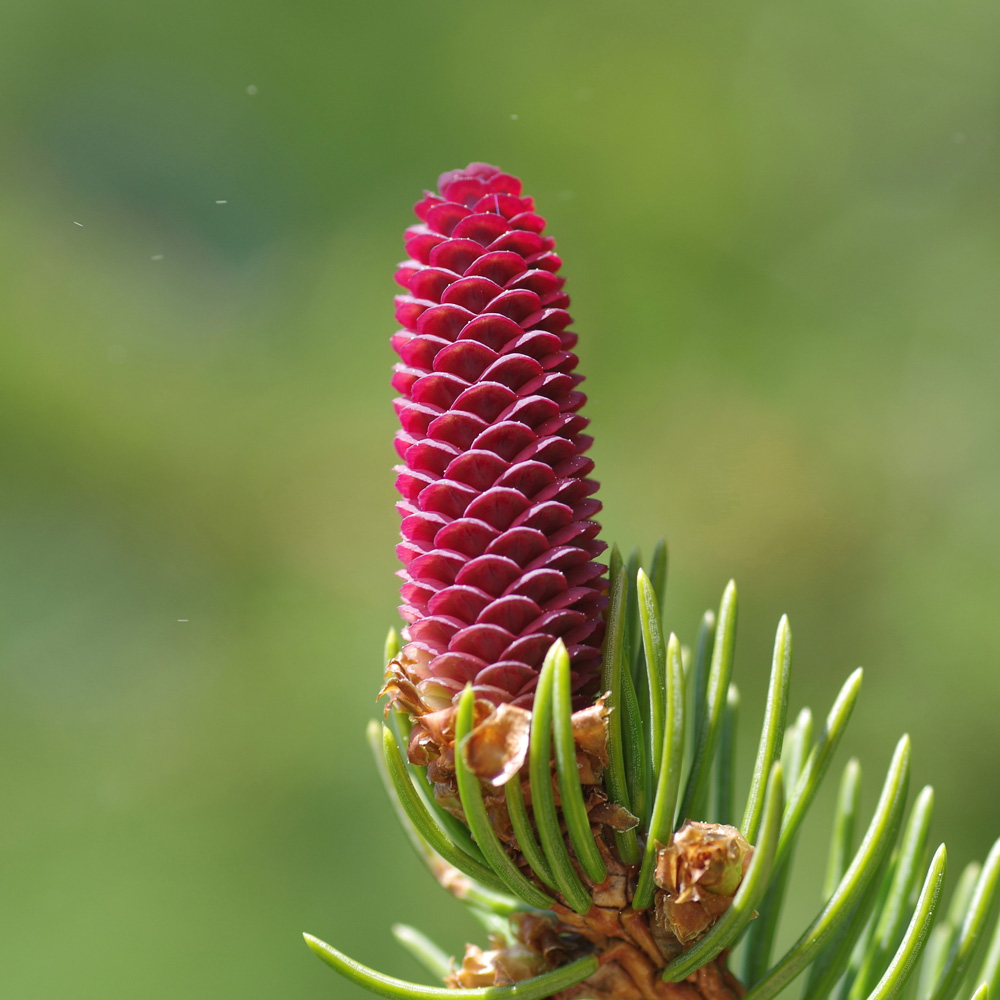
WCSBs locate their food with the help of infrared sensors on their abdomens. The growing reproductive tissue in cones emits infrared radiation (whether mechanical or metabolic is not clear) that makes them hotter – by as much as 60 degrees F – than the surrounding needles, and the bugs’ sensors can “see” that! An infrared photo of a conifer with developing cones has been likened by several researchers to a lit-up Christmas tree https://naturescrusaders.files.wordpress.com/2008/11/a1790_22061.jpg. The WCSB is not the only insect with this super power. The BugLady is blown away by both the bug and the plant sides of this.
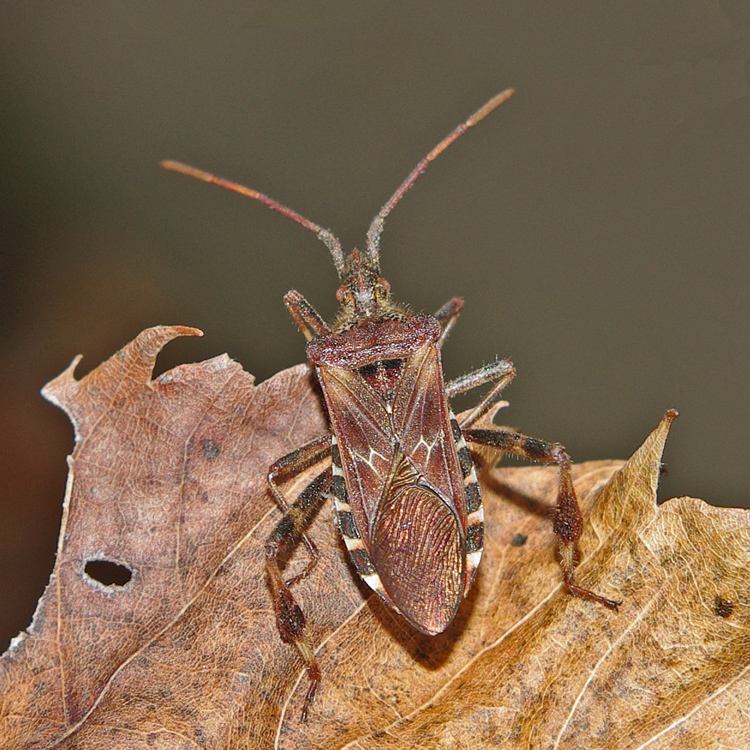
They’re about ¾” long, and adults come in a variety of shades of brown https://www.marylandbiodiversity.com/view/11012. Nymphs are orange-ish https://bugguide.net/node/view/1999752/bgimage, especially right after they molt.
There’s only one generation per year in much of its range. Eggs are laid in rows along needles https://bugguide.net/node/view/115877/bgimage, and when the nymphs hatch in about 10 days, they start extracting sap from the most tender parts of the cone. Nymphs grow and molt throughout summer, becoming adults on their final (5th) molt in late August.
Adults feed on seeds through early fall and then start considering their winter options. In the wild, these include crevices under bark or in soft, dead trees, or in bird or rodent nests. Whether indoors or out, WCSBs overwinter in a state called diapause, a suspended animation where development is stalled. They prepare for diapause in fall by stocking up on nutrients like fats, carbs, and proteins that not only help them enter it but give them enough energy to come out of it at the end of winter. Adults emerge from their winter abodes in spring and feed on developing conifer seeds and flowers, and the beat goes on.
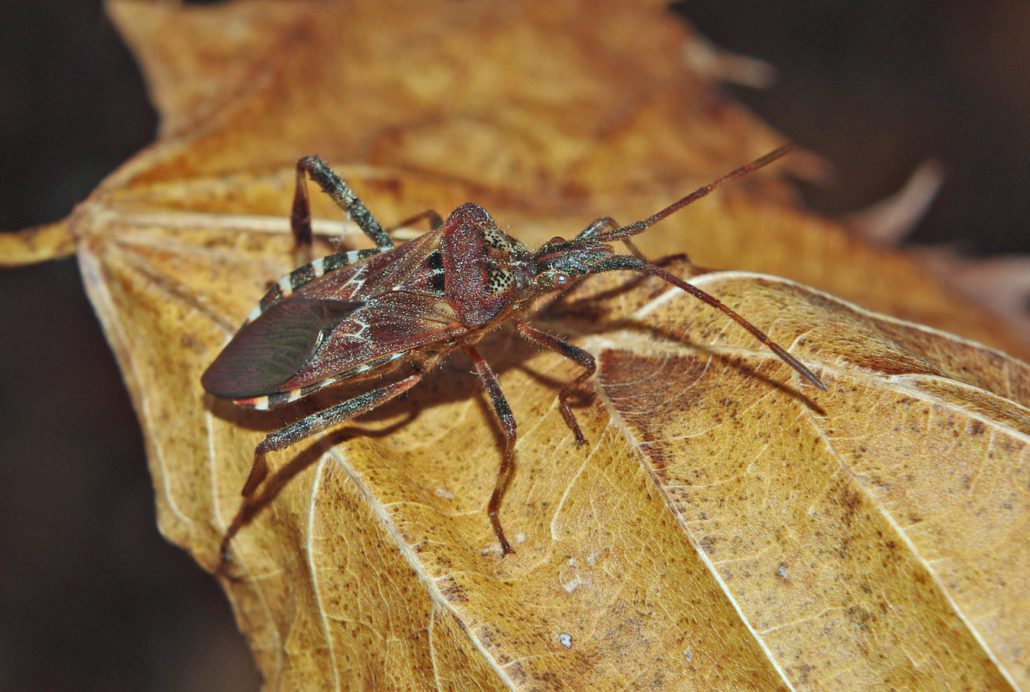
Sources seemed to agree that while this might be considered a minor tree pest, it’s a bigger human pest. When the autumn air starts to chill, urban and suburban WCSBs gather on sunny southern exposures and start moving inside. Male aggregation pheromones may call hundreds of their confreres to a potential winter home (the BugLady has never seen more than a few WCSBs at one time in any season).
As winter houseguests they get mixed reviews. Notwithstanding some people’s (inexplicable) aversion to having six-legged housemates, WCSBs rarely bite or sting (the occasional poke has been recorded) or eat the drapes or the dogfood or the houseplants (and so they don’t poop), they don’t reproduce or carry any diseases, and they pack up and leave in spring. But when bothered, they may release an odor (a combination of hexanal and hexyl acetate) that most sources described as pungent, foul-smelling, and noxious, but that one source described it as “piney” or “vanilla-like.” Once they’re inside, it’s hard to get them out, so an ounce of prevention (in the form of sealing leaks in windows, eaves, etc.) is worth a pound of cure.
Thanks to BugFan Elaine for suggesting this one.
Kate Redmond, The BugLady
Bug of the Week archives:
http://uwm.edu/field-station/category/bug-of-the-week/
